
Purchased from the Roman collection of Bertinelli in 1878. Palmezzano was a typical representative of the style of the Quatrocento era and a very fruitful artist. In his work, he repeatedly developed the theme of Sebastian, a former Roman soldier who became a martyr and a saint of the Christian church. The closest version of this painting was kept in its time in Karlsruhe – a multi-figured composition, dated 1521 year.
These two paintings were painted almost at the same time and belong to the period of Palmezzano’s life, when in his work the features of decline are already observed. In these boards there is no longer a wealth of colors and light, characteristic of his previous works. And this Esztergom picture deserves attention due not so much to color as to the subtlety of the pattern.
In Palmezzano’s works, the often recurring motif is the thick, dry branches of the trees, which turn the scene of the painting into a kind of gloomy arbor. In all likelihood, this detail has an allegorical meaning: the branch with leaves depicted in the foreground symbolizes the Christian faith in the obsolete pagan world.
The ruins of ancient buildings also indicate the death of paganism. On the right side of the picture are visible receding Roman archers. This rare solution of the Palmezzano theme was adopted, probably from one famous painting by Mantegna on the same theme.
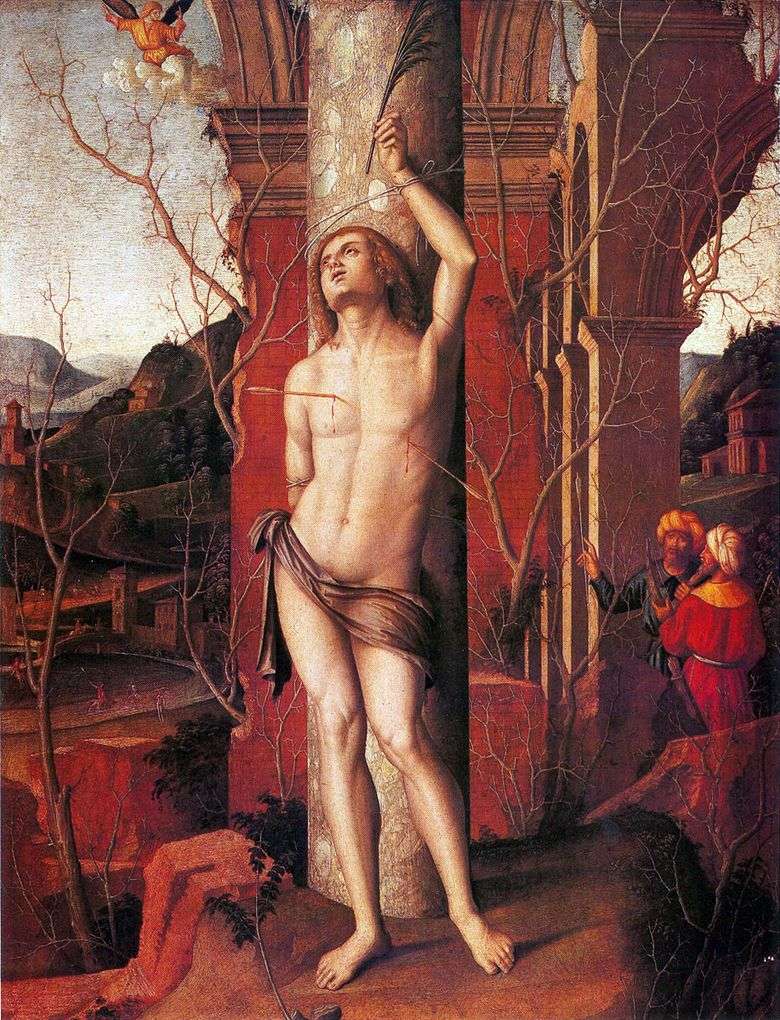 San Sebastián – Marco Palmezzano
San Sebastián – Marco Palmezzano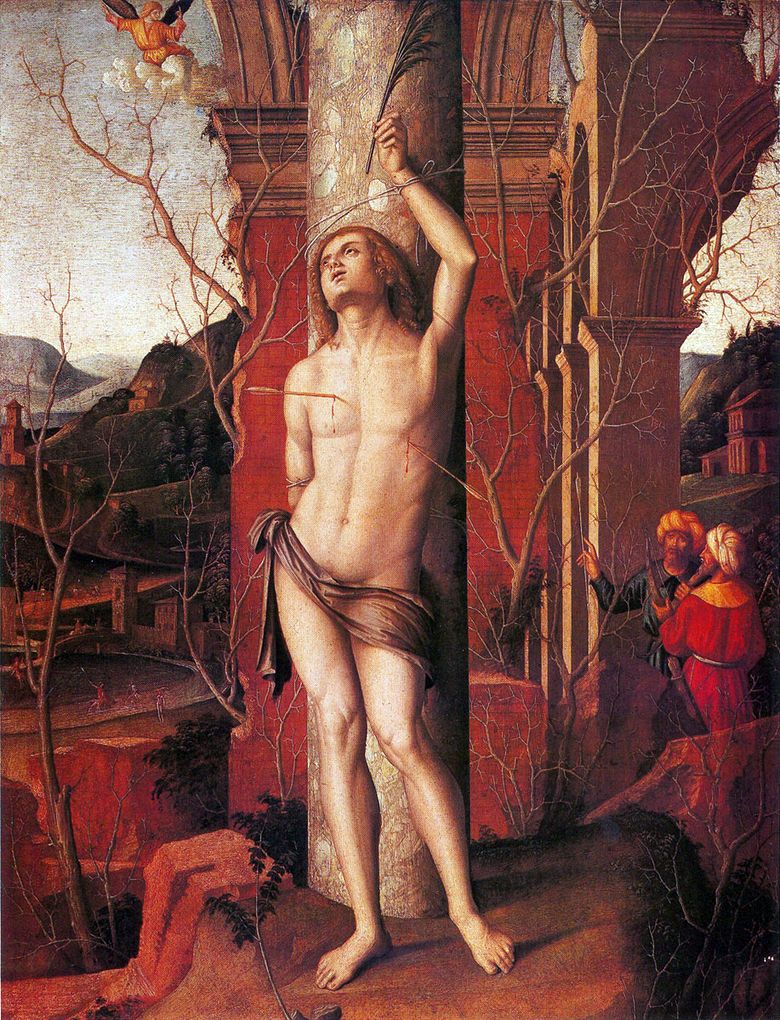 Saint Sébastien – Marco Palmezzano
Saint Sébastien – Marco Palmezzano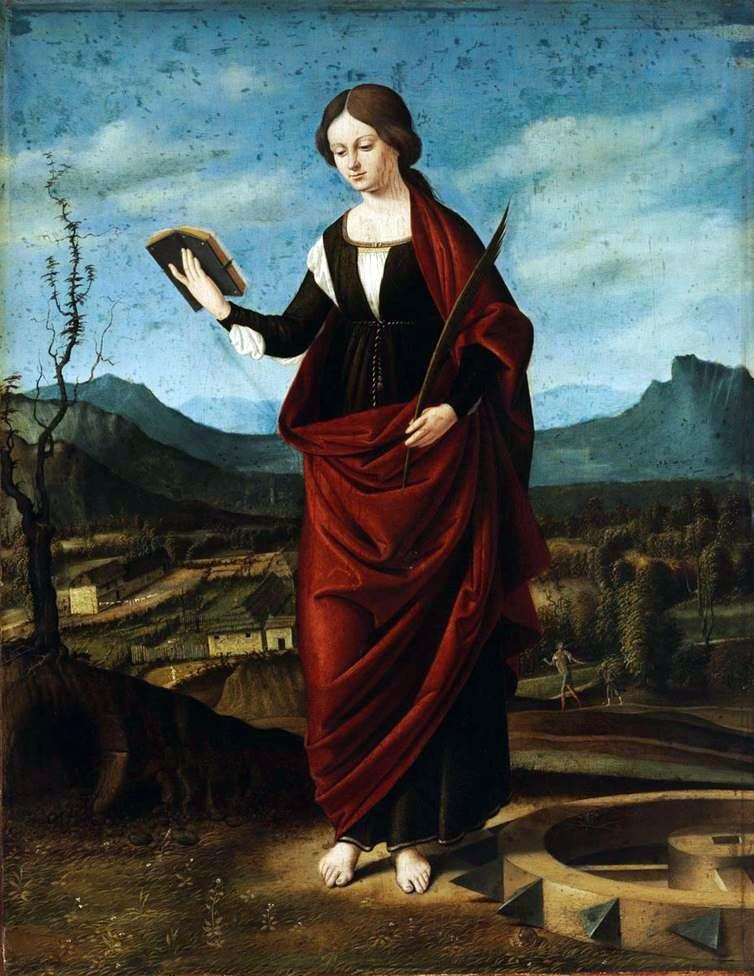 Saint Catherine of Alexandria by Marco Basaiti
Saint Catherine of Alexandria by Marco Basaiti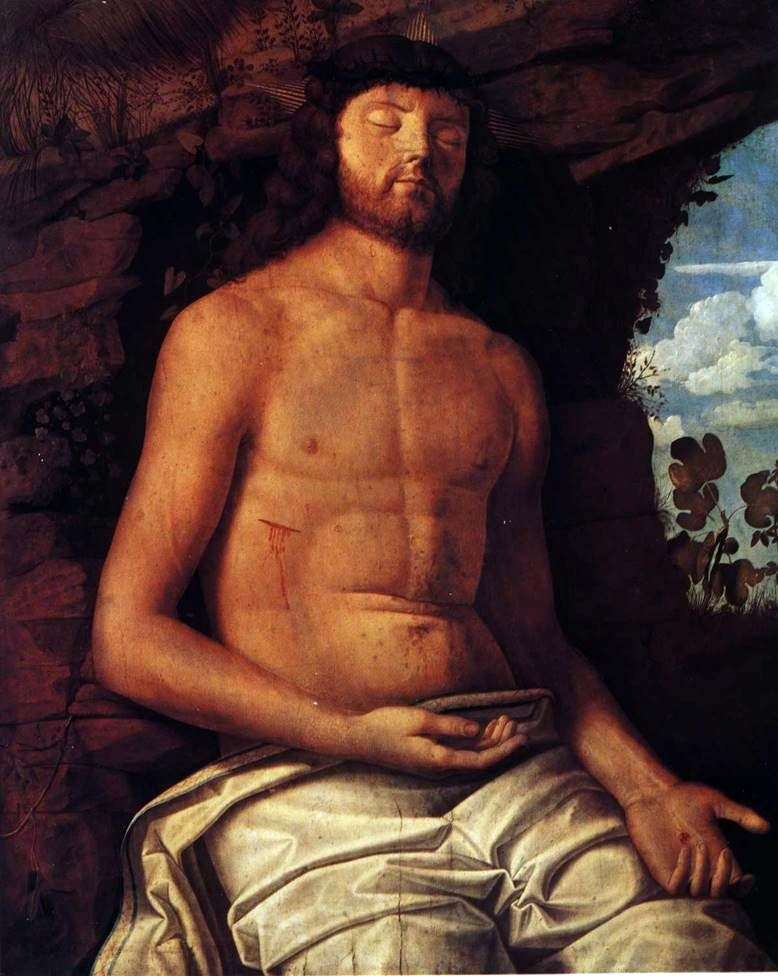 Body of Christ by Marco Bassiati
Body of Christ by Marco Bassiati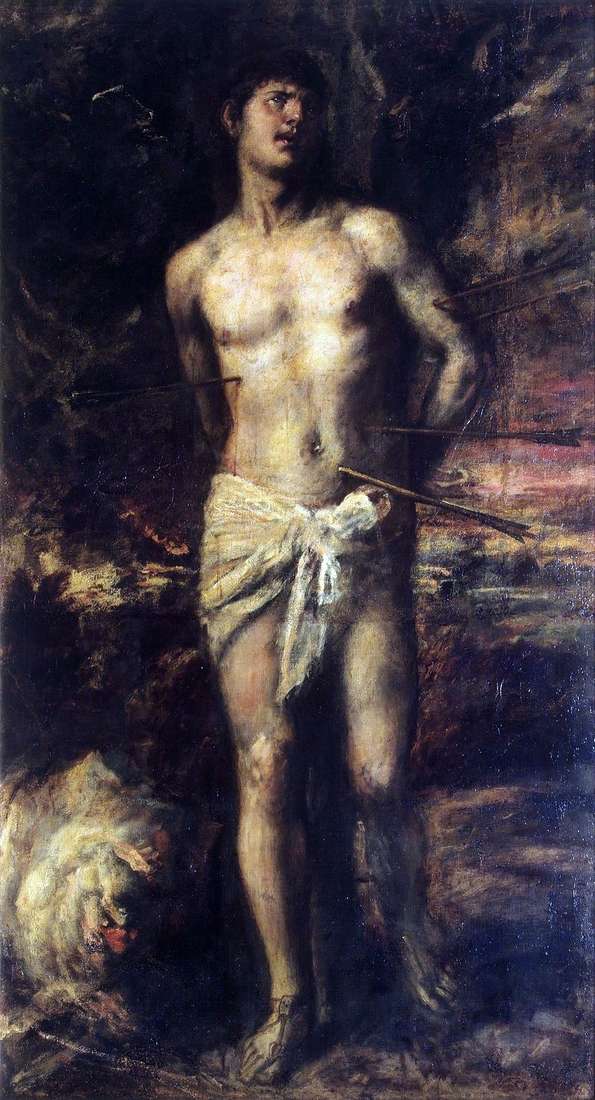 Saint Sebastian by Titian Vecellio
Saint Sebastian by Titian Vecellio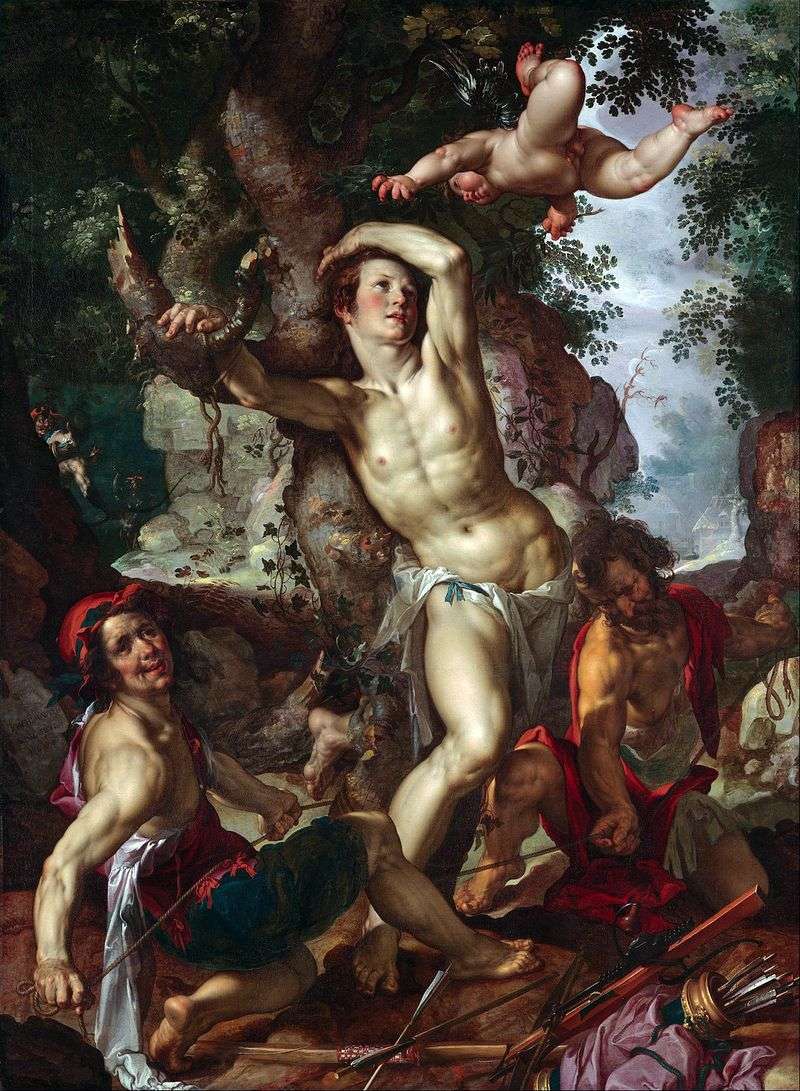 The death of St. Sebastian by Joachim Eytale
The death of St. Sebastian by Joachim Eytale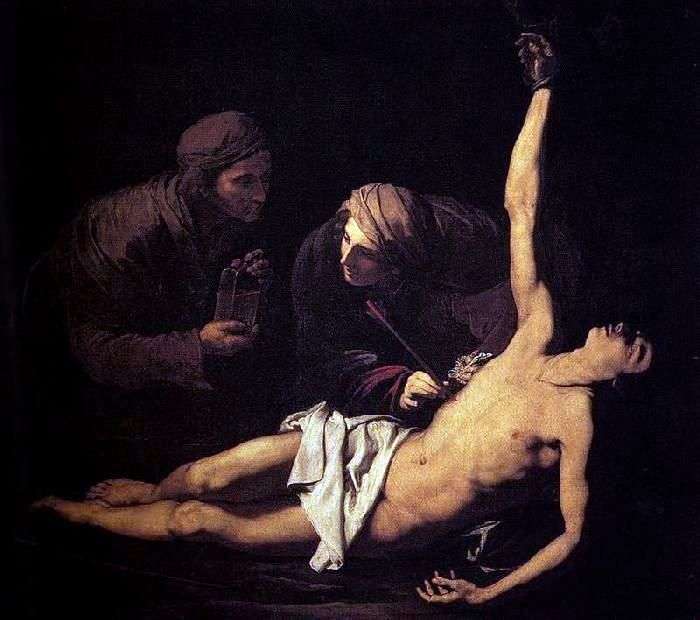 The Martyrdom of St. Sebastian by Jusepe Ribera
The Martyrdom of St. Sebastian by Jusepe Ribera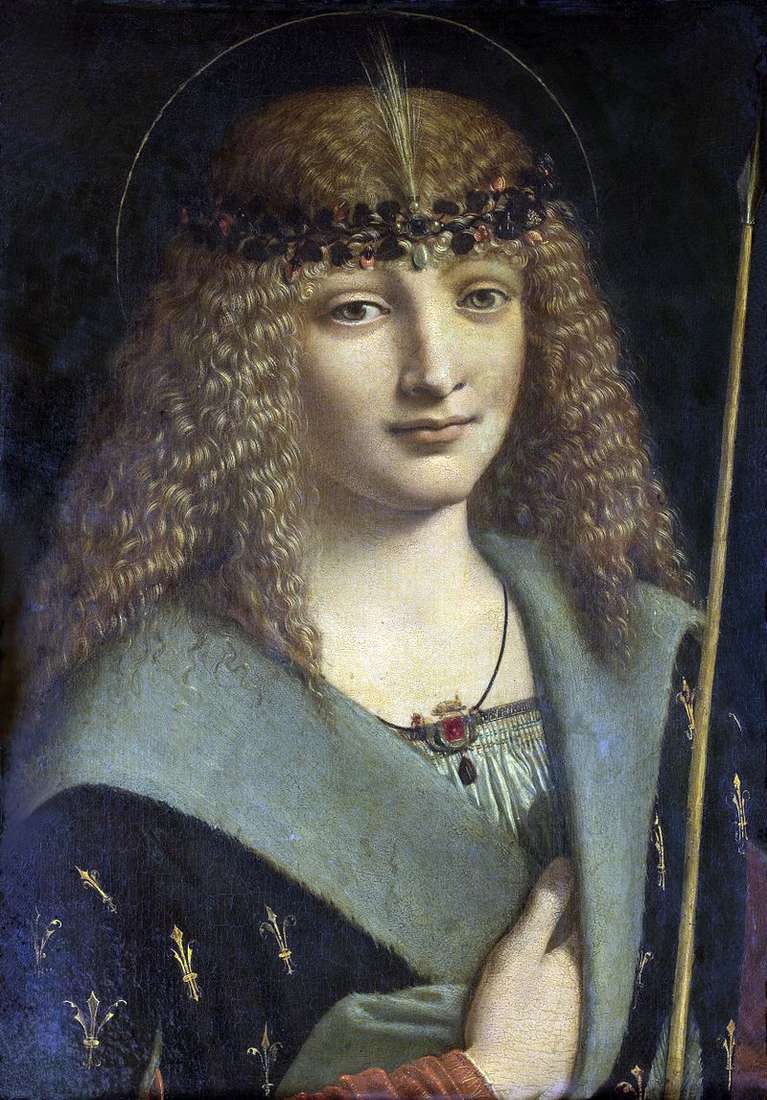 Portrait of a young man in the image of Saint Sebastian by Antonio Boltraffio
Portrait of a young man in the image of Saint Sebastian by Antonio Boltraffio